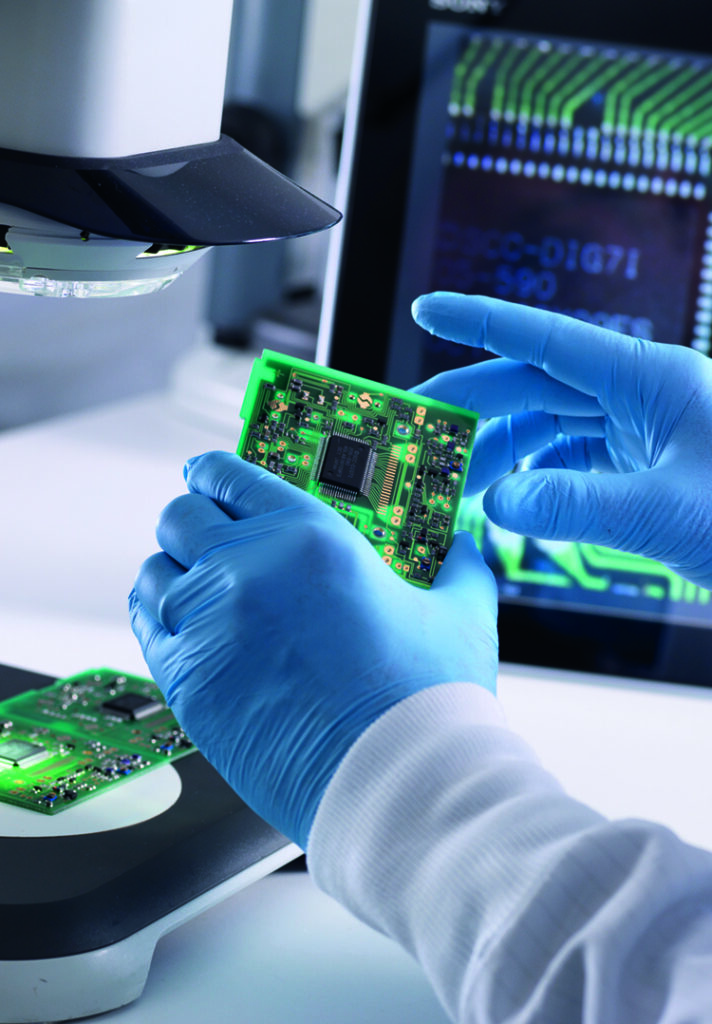 In this article, Vision Engineering’s Sarah Eagles introduces the benefits of microscope-based inspection, from component goods-in to dispatch of finished PCB assemblies.
In this article, Vision Engineering’s Sarah Eagles introduces the benefits of microscope-based inspection, from component goods-in to dispatch of finished PCB assemblies.
Visual inspection is an essential tool in the inspector’s toolbox, with visual comparisons against a ‘golden board’ extremely useful.
The simplest form of MVI is the naked eye. However, this is only likely to identify obvious defects, particularly when inspecting smaller, more dense PCBs. It is more common to use a microscope, ensuring a more accurate, detailed view.
Microscopes are used throughout the design-for-manufacturing process, with images captured for NPI documentation. Reporting throughout prototype development is important to track design changes and document issues and their resolutions. Image and video files are part of this process.
Many manufacturers outsource their PCB assembly. Fabricators create a replica of the drawings, matching every detail of the customer’s specifications.
Prototypes are inspected under microscope for build defects. PCBs are also assessed for adaptations for improved performance, IPC compliance and increased ease/speed of manufacture.
Once the prototype is approved, engineering validation tests and design validation tests are conducted. Analysis is carried out on PCBs that fail testing and cosmetic checks are made to ensure boards meet updated client specifications.
Finally, production validation tests are run. This is the ‘last build’ stage before the sample PCB is considered acceptable for mass production. The approved PCB moves into mass manufacturing.
Component defects are a major contributor to faulty PCBs. Checks are made for: missing components, misplaced/misaligned components, incorrect component value, damaged components, lifted leads and reversed polarity.
Coating integrity is crucial to proper long-term functioning so inspecting coatings is an important part of the process. Coatings are checked for: pin pricks, tears, uneven spread, thickness and correct masking. Illumination is useful when checking coatings and quickly spotting potential issues. For instance, UV lighting is ideal to assess the integrity of conformal coatings.
Complex boards have thousands of solder joints, all critical to the PCB’s functioning. Inspectors will check for: solder bridging or shorts, open circuits, voids or bumps, residual copper, insufficient solder, excess solder and the general soldering quality.
Throughout all these quality checks, inspectors will also be looking at the PCB’s overall quality including dirt, scratches, dents or warping.
When considering an inspection system, use the following checklist. Look for:
• An intuitive system requiring minimal training, particularly where multiple operators are involved, ensuring accuracy, speed and consistency
• Image quality
• Magnification range
• Program pre-sets, to maintain accuracy while improving throughput
For inspection, Vision Engineering’s customers use the Mantis eyepiece-less stereo microscope, Lynx EVO eyepiece-less stereo microscope and EVO Cam II digital microscope.
For measurement they use the Swift PRO dual optical and video measurement system and LVC Series 3 axis measurement systems
